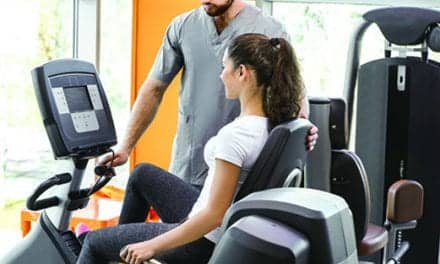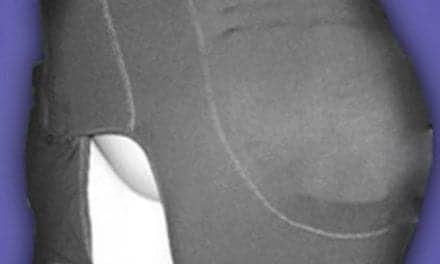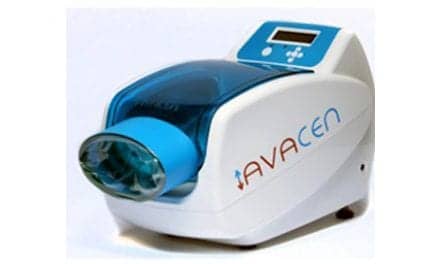A variety of products and technology on the market are available to support cash-pay services in physical therapy clinics
By Lindy D. Royer, PT, PMA-CPT
The Role of the PT
According to the APTA, “Physical therapists are highly educated, licensed health care professionals who can help patients reduce pain and improve or restore mobility—in many cases without expensive surgery and often reducing the need for long-term use of prescription medications and their side effects.”
The APTA states that PTs educate patients in managing or preventing their conditions, evaluate them, and develop a treatment plan to help “promote the ability to move, reduce pain, restore function, and prevent disability.”1
Physical therapy was formally recognized about 100 years ago, when the convergence of two events—WWI and the polio epidemic—created the necessity to form what became the physical therapy profession in the United States. Since then, the landscape has changed considerably, with many alterations in the health care system since the 1990s.
According to the Bureau of Labor Statistics, the physical therapy profession will grow 36% by 2022, adding 73,500 jobs in the decade between 2012 and 2022 due to the demands of an aging population and the mobility needs of those with chronic illnesses like diabetes and obesity. “Job prospects should be particularly good in acute care hospitals, skilled nursing facilities, and orthopedic settings, where the elderly are most often treated.”2 Even though the outlook for physical therapy jobs in acute care and geriatrics is positive, recent changes in insurance, and increasing patient treatment options, could cut into outpatient revenues.
A Changing Landscape
Mike Allen, MSPT, ATC, CSCS, director of physical therapy for the Steadman-Hawkins Clinic in Denver, predicts increasing deductibles will continue to change the landscape. “We will see decreased visits and decreased reimbursement,” Allen says. “We’ll need to utilize the patients’ total number of visits better and think about how to convert the patient to cash-pay.” Allen believes education will be key, by making the patient more aware of the treatment time line, utilization, reimbursement limits, and their responsibility in the process.
At the Steadman-Hawkins Denver clinic, patients are groomed to work with their Sports Performance team on a cash-pay basis after the completion of therapy. This model has been so successful for SH that the Sports Performance division has had to relocate to a larger space.
The idea of converting physical therapy patients to cash-pay is not new, and similar changes have been made successfully in other professions. Dentists charge for teeth whitening or cosmetic work, and dermatologists and cosmetic surgeons charge for Botox injections and fillers on a cash-pay basis.
We have seen growth in the use of new PT technologies and programs in the past decade that lend themselves to “up-selling” our patients after the completion of rehabilitation treatment. Specialty programs, Pilates, wellness and fitness coaching, pain relief treatments, and sports recovery technologies all show promise for the future of physical therapy as a player in the cash-pay arena.
Establishing a Cash-Pay Model
Complimentary and Alternative Medicine is almost entirely cash-pay. According to the NIH, patients were willing to spend $33.9 billion out-of pocket in 2009,3 the most recent year statistics are available. In 2013, The International Health, Racquet and Sportsclub Association reported 2012 US Health Club revenue of $21.8 billion.4
Historically, PTs have not aggressively entered the cash-pay arena, preferring to maintain their long-established dependence on insurance reimbursement and MD referrals. As a profession, are we allowing other fitness and health care professionals to define us by marketing directly to the public with similar messaging to our own? Can we afford to stay in the cycle of referral-reimbursement, and if not, what are our options?
With the right messaging, the current climate presents an opportunity for PTs to go directly to the public and leverage their training and expertise. Mike Allen’s assessment is that people will be more discretionary about how they’re spending their physical therapy dollars in the future. The American Health Insurance Plan Institute’s 2013 Census indicates 15% growth of health savings accounts/high-deductible health plans over the last several years.5
PTs are uniquely qualified to provide rehabilitation and bridge the gap from injury or postsurgery to fitness and sports performance, and yet, “We seem to be losing the Phase 3 and 4 patients to the sports conditioning industry,” Allen points out.
Claiming a Cash-Pay Niche
There is an emerging population willing to spend out-of-pocket dollars for improved performance, pain relief, recovery, and better function and mobility. Like all consumers, this population wants quality care and state-of-the-art technology in return.
Many smaller niche therapy practices throughout the US have added cash-pay programs and technologies with great success. This model provides the commodity that patients are seeking: time with their PT. Kristopher D. Bosch, PT, DPT, ATC, FAAOMPT, owner of Athletes Physiotherapy in Las Vegas, says a cash-pay scenario gives the PT “the time to screen, evaluate, and tease out the source of the person’s complaint.”
In the insurance-based, high volume scenario, “The patient sometimes becomes frustrated if all they’re doing is the same root exercises day in and day out without supervision,” Bosch points out. This often results in a patients dropping out and seeking a trainer or coach who provides the supervision the patient needs.
New Tools and Technologies
With customers demanding higher-quality service and cutting-edge technology in all aspects of their lives, from electronics to sports equipment, it comes as no surprise that new technologies and programs in physical therapy offer a great opportunity to attract cash-pay customers looking for something extra.
New physical therapy offerings include cold laser therapy, TRX, sports and conditioning programs, Pilates programs, computer-based applications, whole-body vibration, targeted programs for specific populations, wellness programs, sports assessments such as gait assessment and training for runners, bike fit for cyclists/triathletes, dance medicine, pain management/recovery modalities, and online programs.
Sports Assessment
Advancements in robotics and software programs such as Microsoft Kinect allow for more accurate assessment and re-education. In pediatrics and adult physical therapy, games like the Nintendo Wii have become popular as a way to motivate, add variety, and up the fun factor. There are multiple online programs offering everything from patient compliance tracking to home program videos.
There are several applications using the Microsoft Kinect as a tool for assessment and home program instruction. One of the most promising is a product called Vera, from San Diego-based company Reflexion Health, which raised $7.5 million to continue development in March 2014. Also, for sports assessment, a study by Stone et al indicates, “The Kinect skeletal model likely offers acceptable accuracy for use as part of a screening tool for elevated ACL injury risk.”
Sports Conditioning and Pilates
For sports conditioning, Mike Allen says the “old-fashioned” approach of applying solid movement science, correct alignment, and research-based techniques to speed and strength conditioning training remains the gold standard. For commercial strength and conditioning equipment, Cybex International Inc, based in Medway, Mass, is still the tried-and-true choice for many therapists. Lifting weights while on the VibePlate, which is manufactured by VibePlate, Lincoln, Neb, claims to stimulate fast-twitch muscle fibers, although research into this technology is thin at the current time.
For sports conditioning equipment, OPTP, Minneapolis, is a good source for small props and equipment, and Fitness Anywhere LLC offers the TRX Suspension Trainer for suspension training.
Pilates programs have caught on in many outpatient clinics, providing a seamless progression from one-on-one rehabilitation to group injury prevention and performance classes. For Pilates equipment, Balanced Body, Sacramento, Calif, is a provider of Pilates equipment as well as the exclusive manufacturer of CoreAlign. Balanced Body also provides education in Pilates, CoreAlign, and other disciplines. In addition, Gratz is the oldest Pilates equipment manufacturer and also offers equipment and products for Pilates.
Pilates Reformers are one type of Pilates equipment designed to provide finely tuned exercise resistance that allows one to work very precisely to develop good alignment, core strength, and flexibility. The Pilates Studio Reformer offers durability and a smooth, quiet ride for users. For Pilates accessories, Balanced Body Functional Footprints are one option that aim to teach leg alignment without placing stress on the ankle or knee. The Functional Footprints can be an excellent tool for rehabilitation as well as dance medicine.
An additional Pilates accessory offered by Balanced Body is the Clara Step Barrel, which are stackable barrels that can be stacked up to eight high. Step Barrels are designed to focus on the core abdominal, back, and shoulder muscles, and aids the user in stretching these specific muscle groups. This company also manufactures the Pilates Trapeze Table, a table that allows a variety of exercises to be performed, such as spring-assisted sit-ups. The Trapeze Table is suitable for use by all ages and abilities, and is engineered for stability and to provide ease of movement.
Pain Management
Dry needling has become popular in states that allow PTs to utilize it.6 KinetaCore is the most dominant physical therapy dry needling program. Edo Zylstra, PT, DPT, MS, OCS, IMSp, founder, owner, and CEO of KinetaCore, has been very instrumental in getting dry needling into physical therapy practice acts nationwide. For supplies, KinetaCore promotes Lhasa Oms as a supplier of products and equipment for dry needling. In addition, Yun-tao Ma, PhD, also has a large education practice of dry needling. “Integrative Dry Needling, Orthopedic Approach” is a contemporary dry needling therapy developed by Ma and based on prior research and clinical evidence.
Cold laser therapy is being used with more frequency to treat multiple conditions, including pain, tendinitis, and arthritis. To administer cold laser therapy, companies such as Chattanooga, a DJO Global company based in Vista, Calif, which manufactures the Vectra Genesis laser therapy system, and Pivotal Health Solutions, headquartered in Watertown, SD, which offers the Apollo Portable Laser for cold laser therapy, offer products and equipment for this type of therapy.
Therapeutic taping is another versatile treatment option to reduce pain. Therapeutic tape can also be used for treating athletic injuries and a variety of physical disorders. Kinesio, Albuquerque, NM, and the Toronto-based company Spidertech, offer Kinesio tape and other therapeutic taping products. Rocktape, Campbell, Calif, also offers therapeutic tape for rehabilitation.
The ability to leverage these technologies depends on state practice laws. In states where unrestricted direct access is the standard, PTs may have more success in attracting cash-pay patients.
In many states, patients are not aware there is such a thing as direct access. In Nevada, a direct access state, Bosch notes, “Direct access is not marketed. Patients don’t understand what it is or how it works. Going forward, you’re going to see more utilization of direct access as more providers go cash-based.”
With all these technologies and programs available, it can be difficult to assess clinical outcomes. “I would like to think these new technologies are improving outcomes, and the people who use them certainly seem to think so,” Bosch says. Ultimately, he believes, the proof is in the pudding. “If people are getting results, then they’re going to keep doing it, and your practice is going to grow.”
What’s on the Horizon?
Physical therapy has entered a new phase and has potential for growth as a cash-pay option, as well as an opportunity to redefine our role and assert our value as professionals specializing in rehabilitation, injury prevention, sports performance, and functional mobility.
New technologies and programs can enhance our effectiveness, attract new customers/patients, and widen our net, simultaneously changing the public mindset that physical therapy is just for rehabilitation and can only be provided via MD referral and insurance reimbursement.
There are many exciting developments in the areas of digital technology, utilizing computers, smartphones, and tablets to increase compliance, connect, track, and train.7 We’ll be seeing more of the latest entry into the functional movement training arena, such as the CoreAlign,8 developed by PT Jonathan Hoffman, which stimulates core stability in an upright position while providing challenges for all ability levels.
In the end, perhaps it isn’t the technologies we use that will cement our place in this evolving landscape of fitness and healthcare, but our ability to define who we are and leverage our training and expertise. PTP
Lindy D. Royer, PT, PMA-CPT, is an Australia-trained physiotherapist who relocated to Colorado in 1979. Royer became passionate about integrating Pilates into her practice, and currently does speaking and workshop engagements. In 2005, she opened her holistic movement center Park Meadows Pilates & Physical Therapy in Lone Tree, Colo.





